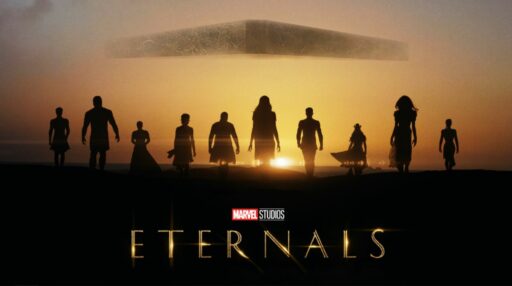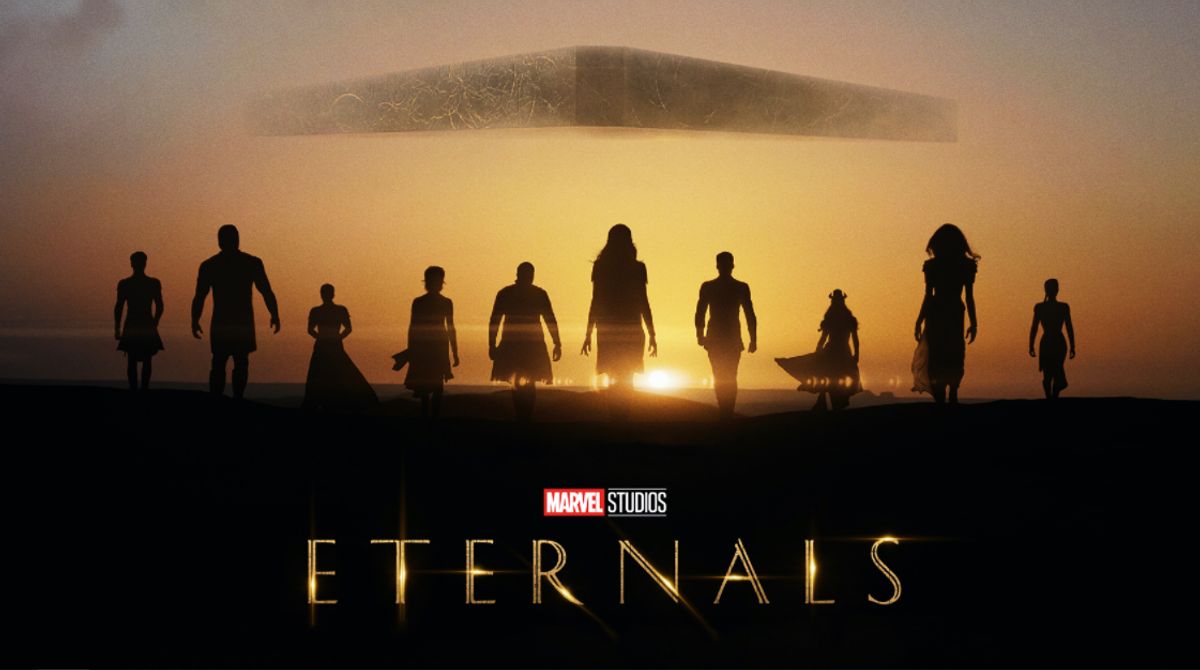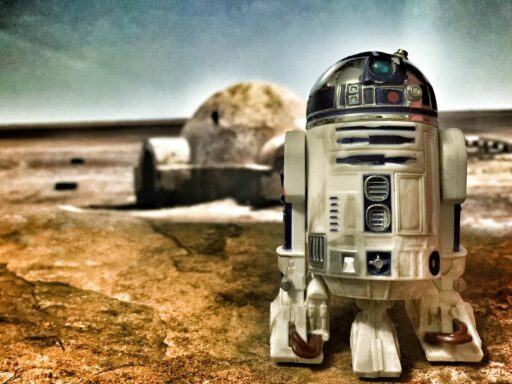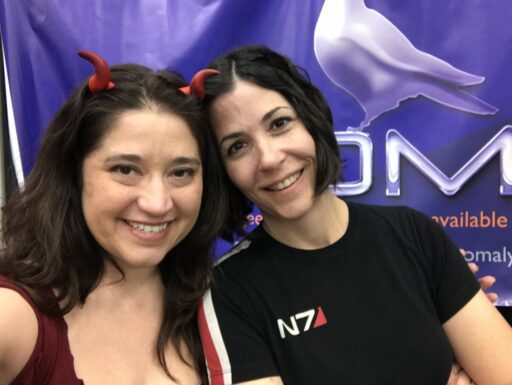The ‘Eternals’ movie, a recent addition to the Marvel Cinematic Universe (MCU), offers a unique and expansive narrative that delves into the lore of immortal beings tasked with protecting Earth. This article, ‘Unveiling the Immortals: A Closer Look at the ‘Eternals’ Movie,’ aims to dissect various aspects of the film, from its origins and character dynamics to its storytelling techniques and broader cultural impact. Through an in-depth exploration, we seek to understand the intricacies that make ‘Eternals’ a standout piece in the superhero genre.
Key Takeaways
- The ‘Eternals’ movie represents a bold narrative expansion within the MCU, connecting to previous installments while charting new cosmic territory.
- An in-depth analysis of the characters reveals a diverse and complex ensemble, blurring the lines between heroes and deities.
- The film’s narrative structure showcases a sophisticated interweaving of multiple timelines, enriched by mythological elements.
- Visually stunning and sonically compelling, ‘Eternals’ leverages high-quality production details and a resonant soundtrack to enhance the viewer experience.
- Despite mixed critical reception, ‘Eternals’ has made a significant cultural impact and set the stage for future developments in the MCU.
The Genesis of Eternals: Tracing Its Cinematic Journey


The Marvels: Setting the Scene
In the wake of Avengers: Endgame, Marvel Studios embarked on an ambitious new chapter, weaving a tapestry of narratives that expanded the Marvel Cinematic Universe (MCU) into uncharted territories. The announcement of Phase 4 at Comic-Con 2019 was a testament to Marvel’s confidence, showcasing a lineup that promised diversity and innovation.
The journey to ‘Eternals’ can be traced through a series of pivotal features that set the stage for this cosmic ensemble. Below is a snapshot of the key movies leading up to ‘Eternals’:
- Guardians of the Galaxy (2014): Introduced the MCU to the cosmic realm and set a precedent for interstellar storytelling.
- Captain Marvel (2019): Expanded on the Kree-Skrull war and further explored the universe beyond Earth.
- Avengers: Infinity War (2018) & Endgame (2019): Culminated the decade-long build-up of the Infinity Saga, setting the stage for a new era.
The Eternals, with their rich history and complex relationships, offer a fresh lens through which to view the ever-evolving Marvel narrative. Their introduction is not just a continuation but a bold leap into a broader universe where the stakes are cosmic, and the stories are boundless.
The Road to Endgame: A Prequel Perspective
The intricate tapestry of the Marvel Cinematic Universe (MCU) is a masterclass in storytelling that spans across various timelines and character arcs. The Eternals, while a standalone saga, is deeply interwoven into the fabric of the MCU’s history, setting the stage for the climactic events of ‘Avengers: Endgame’.
The Eternals’ narrative serves as a prequel to the culmination of the Infinity Saga, offering insights into the cosmic forces that have shaped the universe.
Understanding the chronological order of Marvel movies is crucial for grasping the full scope of the narrative. Here’s a succinct guide to the placement of ‘Eternals’ within the MCU timeline:
- Captain America: The First Avenger – The beginning of it all
- Captain Marvel – Introducing cosmic elements
- Eternals – Revealing the ancient protectors
- Iron Man – The start of the modern-day hero
- The Avengers – Assembling Earth’s mightiest
- Avengers: Endgame – The epic conclusion
The Eternals’ story not only enriches the existing MCU lore but also sets the groundwork for future cosmic narratives, expanding the universe beyond the familiar terrestrial and intergalactic battlegrounds.
Connecting the Cosmic Dots: From Guardians to Eternals
The Marvel Cinematic Universe timeline is a masterful tapestry of interconnected stories, with each installment contributing to a larger narrative. ‘Eternals’ is no exception, drawing threads from previous films to weave its own story.
- Feature: The Road to Endgame Part 21: Captain Marvel (2019)
- Feature: The Road to Infinity War Part 10: Guardians of the Galaxy (2014)
- Feature: The Road to Infinity War Part 11: Avengers: Age of Ultron (2015)
- Feature: The Road to Infinity War Part 12: Ant-Man (2015)
- Feature: The Road to Infinity War Part 13: Captain America: Civil War (2016)
- Feature: The Road to Infinity War Part 14: Doctor Strange (2016)
The journey to ‘Eternals’ is marked by significant milestones, each film laying the groundwork for the next. The intricate planning and execution of this timeline showcase Marvel’s commitment to a cohesive cinematic universe.
With over 3,000 visual effects shots, ‘Guardians of the Galaxy Vol. 3’ is a testament to the technological prowess that Marvel Studios brings to the table, setting the stage for the visual spectacle that is ‘Eternals’.
Character Deep Dive: The Immortal Ensemble


Marvel Studios Character Encyclopedia: A Reference
Marvel Studios has expanded its horizons with Phase 4, introducing a plethora of new characters that redefine the superhero genre. The ‘Eternals’ movie is a testament to this evolution, bringing an immortal ensemble to the forefront of the cinematic universe.
The character lineup in ‘Eternals’ is as diverse as it is powerful, each with unique abilities and backstories that contribute to the film’s rich narrative tapestry. Here’s a quick reference to some of the key players:
- Ikaris: The tactical leader with the power of flight and energy projection.
- Sersi: An empathetic Eternal with the ability to manipulate matter.
- Thena: A fierce warrior, skilled in hand-to-hand combat and weapon creation.
- Ajak: The spiritual leader who can communicate with the Celestials.
- Kingo: The Eternal with the flair for showmanship, capable of projecting cosmic energy.
The inclusion of such a varied cast not only enhances the storytelling but also mirrors Marvel’s commitment to diversity and representation in its Phase 4 lineup. This shift is a clear indication that the studio is not just creating a universe of characters but also a reflection of the world we live in today.
The New Pantheon: Heroes or Gods?
The Eternals, a group of ancient beings with god-like powers, challenge the very notion of divinity and heroism. Are they protectors of humanity or rulers destined to surpass their creators? This question is central to the narrative, as the Eternals grapple with their purpose and the moral implications of their immense abilities.
- The Eternals’ powers range from super strength to mind control, each reflecting a different aspect of the divine.
- Their longevity allows them to witness and influence human history, blurring the lines between guardians and influencers.
- The complexity of their relationships with each other and with humans adds a rich layer to the story, as they are bound by both affection and duty.
The Eternals stand at the crossroads of mythology and humanity, embodying the traits of both while belonging fully to neither. Their existence raises profound questions about power, responsibility, and what it means to be immortal.
Diversity and Representation in Eternals
Marvel’s commitment to diversity took a significant leap with the release of Eternals. The film not only introduced a new ensemble of heroes but also broke ground in terms of representation. It featured the MCU’s first deaf superhero, Makkari, portrayed by deaf actress Lauren Ridloff, marking a milestone for inclusivity in superhero cinema.
The casting choices in Eternals reflect a broader initiative within the industry to embrace diversity. With directors and key roles being filled by women and people of color, Marvel is setting an example for others to follow. This shift is not just about on-screen representation; it’s about who is telling the stories and how they are being told.
Despite these strides, the film faced challenges upon release. > Review-bombing due to its diverse cast and LGBTQ representation likely affected Eternals‘ reception as well. The timing was not in Marvel’s favor either, with external factors influencing audience perceptions.
As the industry continues to evolve, the impact of films like Eternals on wider representation cannot be understated. They pave the way for more stories that reflect the rich tapestry of human experience, offering unique and valuable insights.
Narrative Nuances: Storytelling in Eternals


The Mythology Behind the Movie
At the heart of Eternals lies a rich tapestry of mythology interwoven with the narrative, drawing inspiration from various ancient cultures and their legends. The film’s mythos is not just a backdrop but a driving force in the story, shaping the characters and the world they inhabit. The Eternals themselves are reminiscent of gods from old myths, each embodying different aspects of these timeless tales.
The creators of Eternals meticulously crafted a universe where the fantastical elements are grounded in a sense of reality. This approach mirrors the emotional epicness found in other cinematic works, such as those depicting the struggles of individuals amidst Japan’s military conflicts, renowned for their realism and emotional impact.
The Eternals’ journey is not just a fight against external threats but also an exploration of their own immortal existence and the implications it has on their personal identities.
The mythology in Eternals extends beyond the characters to the very fabric of the universe they protect. It’s a world where magic and science are two sides of the same coin, and where the audience is invited to suspend disbelief and immerse themselves in the grandeur of the cosmos.
Timeless Themes and Modern Messages
The ‘Eternals’ movie transcends the typical superhero narrative by embedding timeless themes within its cosmic storyline. At its core, the film explores the enduring nature of humanity, love, and sacrifice, while also addressing modern concerns such as environmental issues and the impact of technology on society.
- The struggle between free will and destiny.
- The complexities of immortality and its moral implications.
- The significance of diversity and the strength found in unity.
In a world where the lines between right and wrong are increasingly blurred, ‘Eternals’ challenges viewers to consider the weight of their actions and the ripple effects they have across time.
The movie’s ability to weave these grand concepts into a visually stunning tapestry is a testament to the creative vision behind Marvel’s storytelling. It’s not just about the battles and the spectacle; it’s about the messages that resonate with audiences long after they leave the theater.
The Art of Weaving Multiple Timelines
The narrative complexity of Eternals is a testament to the meticulous art of weaving multiple timelines into a cohesive story. The challenge of synchronizing disparate time periods and locations is a feat that required innovative storytelling techniques and advanced visual effects.
- The story unfolds across various epochs, each with distinct visual and thematic elements.
- Scenes are intricately interlaced, demanding a high level of continuity and attention to detail.
- The use of previsualization tools was crucial in mapping out the temporal and spatial choreography of the film.
The seamless integration of these timelines is not just a technical accomplishment but also a narrative device that enriches the depth and complexity of the plot.
The production team’s approach to this complex narrative structure was to maintain a live and contextual workflow throughout the process, ensuring that all elements were aligned and coherent. This strategy allowed for parallel development of assets and a dynamic writing process that adapted to the evolving visual landscape.
Visual and Audio Spectacle: Crafting the Immortal Experience


RiMS Racing Third Documentary: A Lesson in Detailing
The meticulous attention to detail in the ‘Eternals’ movie is reminiscent of the craftsmanship showcased in the RiMS Racing Third Documentary. The documentary highlighted the precision and dedication involved in creating high-quality racing wheels, which parallels the intricate visual effects and set designs seen in ‘Eternals’.
The commitment to detail is not just about aesthetics; it’s about creating an immersive experience that resonates with audiences. Just as the Revolution Split Rim Racing Wheels are crafted with precision, every element of ‘Eternals’ was designed to contribute to a cohesive and captivating cinematic universe.
The pursuit of perfection in visual storytelling is a journey that demands both innovation and reverence for the craft.
This dedication to detail is evident in the following aspects of the film’s production:
- The creation of unique and diverse character designs.
- The construction of elaborate sets that transport viewers across different eras.
- The integration of advanced visual effects that blend seamlessly with live-action footage.
Marvel’s Guardians of the Galaxy’s Soundtrack: Setting the Tone
The Guardians of the Galaxy franchise set a new standard for how soundtracks can define the personality of a film. With a mix of classic hits and original scores, the music became a character in its own right, setting the tone for the adventures of this ragtag team of heroes.
The soundtrack’s ability to evoke nostalgia while simultaneously delivering freshness is a testament to the meticulous selection of tracks that resonate with the audience’s diverse tastes.
The Eternals, with its own unique narrative and cosmic setting, had the challenge of matching this auditory experience. The film’s score needed to blend the epic with the intimate, to reflect the grandeur of the immortal beings it portrays while grounding their millennia-spanning journey in human emotion.
- Classic Hits: Songs that audiences know and love, providing an instant connection.
- Original Scores: Compositions that enhance the storytelling and give the film its unique identity.
- Emotional Resonance: Music that reflects the depth of the characters and the scale of their story.
The result was a soundtrack that not only supported the visual spectacle but also deepened the emotional impact of the film’s narrative arcs.
Cinematic Artistry: The Aesthetic of Eternals
The visual narrative of Eternals is a testament to the meticulous craftsmanship that went into its creation. The minimal reliance on CGI, as championed by director Chloé Zhao, allowed for a more naturalistic aesthetic that aligns with her signature style. This approach not only distinguishes the film within the Marvel Cinematic Universe but also resonates with a realism that is often lost in high-concept sci-fi epics.
The production design and visual effects teams worked in concert to infuse real-world locations with digital enhancements, striking a balance between the unique and the familiar. Atmospheric elements, mood, and lighting were carefully calibrated to enrich the storytelling.
The commitment to visual authenticity extended to the use of concept art and practical effects. References from a diverse array of sources, including non-obvious films and real-life objects, were instrumental in achieving the desired level of detail. The result is a cinematic experience that is both visually arresting and emotionally engaging.
Beyond the Screen: The Impact of Eternals


Critical Reception: Reviews and Box Office Performance
The release of Eternals was met with a mixed critical reception, diverging from the typically positive acclaim associated with Marvel Studios’ productions. Despite the polarized reviews, the film managed to garner a significant box office return. The financial success of the movie is evident in its substantial gross earnings.
| Aspect | Detail |
|---|---|
| Box Office Earnings | $402.1 million |
| Production Budget | Estimated $200 million |
| Profitability | Moderately successful |
While the film’s earnings were notable, it’s important to consider the context of its performance. Compared to other Marvel Cinematic Universe entries, Eternals faced unique challenges, including a global pandemic and a shift in audience viewing preferences. > The nuanced evaluation of Eternals extends beyond mere numbers, reflecting a complex interplay of expectations and realities.
The Cultural Footprint of Eternals
The release of Eternals on November 6, 2020, marked a significant expansion of the Marvel Cinematic Universe (MCU), introducing a new ensemble of characters with a rich mythological background. Directed by Chloe Zhao, the film not only brought forth a narrative of immortals tasked with protecting Earth but also set a precedent in terms of diversity and inclusion.
The inclusion of MCU’s first disabled superhero, the deaf character Makkari, portrayed by deaf actor Lauren Ridloff, was a groundbreaking moment for representation in superhero films. This move was widely celebrated and sparked conversations about the importance of authentic representation in media.
The cultural impact of Eternals extended beyond its storytelling and character development. Events such as the Bay Area screening on November 7, 2021, and the establishment of a DEI (Diversity, Equity, and Inclusion) book club reflect the broader initiatives to engage communities and foster inclusive dialogues around the film.
The resonance of Eternals within the cultural zeitgeist is indicative of a growing demand for films that not only entertain but also reflect the diverse experiences of audiences around the world.
As Eternals continues to be discussed in the context of other sci-fi movies like ‘Snowpiercer’ and ‘Ender’s Game’, which depict themes of survival, conflict, and peace with aliens, it becomes clear that the film has secured its place in the recommended movie list for both entertainment and learning experiences.
Future Implications: What’s Next for the Immortals?
As the dust settles from the epic events of the Eternals, fans and theorists alike turn their gaze to the horizon, pondering the future of these celestial beings. While Eternals 2 is not currently in development, the conclusion of the first movie hints at unresolved storylines, suggesting that the Immortals’ saga is far from over. Marvel Studios, engaged in Phase 5 projects, remains tight-lipped about the specifics, yet the anticipation for a sequel or related titles continues to build.
The Immortals have woven themselves into the fabric of the Marvel Cinematic Universe, leaving a trail of questions and possibilities in their wake.
The potential directions for future narratives are as vast as the cosmos they inhabit. Here are a few speculative paths:
- Exploring the aftermath of the Eternals’ decisions and their impact on Earth.
- Delving into the rich history of the Celestials and their influence on the Marvel Universe.
- Introducing new characters from the Eternals’ lore, expanding the ensemble and the scope of their tales.
- Crossover events with existing Marvel franchises, creating a more interconnected cosmic narrative.
Conclusion
As we wrap up our exploration of ‘Eternals,’ it’s clear that this film is a bold stride in the ever-expanding Marvel Cinematic Universe, weaving new threads into the intricate tapestry of its storytelling. While it stands on the shoulders of its predecessors, from the cosmic adventures of ‘Guardians of the Galaxy’ to the earth-shattering events of ‘Avengers: Infinity War,’ ‘Eternals’ carves out its own niche with a unique blend of mythology and science fiction. The movie not only introduces a diverse array of immortal beings but also challenges the audience to ponder the larger role of superheroes in a universe brimming with ancient secrets and emerging threats. As Marvel continues to push the boundaries of its cinematic saga, ‘Eternals’ serves as a testament to the studio’s commitment to innovation and its fearless approach to an ever-evolving narrative landscape.
Frequently Asked Questions
What is the Eternals movie about?
Eternals is a Marvel Studios film that introduces a new team of ancient aliens who have been living on Earth in secret for thousands of years. After the events of Avengers: Endgame, an unexpected tragedy forces them out of the shadows to reunite against mankind’s most ancient enemy, the Deviants.
How does Eternals fit into the Marvel Cinematic Universe?
Eternals is part of Phase Four of the Marvel Cinematic Universe (MCU). It expands the MCU’s scope by exploring the cosmic side of the Marvel Universe and connects with the larger narrative, following the aftermath of Avengers: Endgame.
Who are the main characters in Eternals?
The main characters are a group of immortals with unique powers, known as the Eternals. Key members include Sersi, Ikaris, Thena, Ajak, and others, each with their own special abilities and contributions to the group’s dynamic.
What themes are explored in the Eternals movie?
Eternals explores themes such as immortality, the nature of humanity, the impact of long-term guardianship of Earth, and the moral complexities of intervention in human affairs. It also touches on diversity and representation through its ensemble cast.
Who directed Eternals and how does it differ in style from other MCU films?
Eternals was directed by Chloé Zhao, known for her intimate storytelling and cinematic realism. The film is noted for its distinct visual style, which includes sweeping landscapes and a focus on character-driven narratives, setting it apart from other MCU films.
What can audiences expect from the future of the Eternals in the MCU?
While the future of the Eternals in the MCU has not been fully revealed, it is expected that they will play a significant role in upcoming storylines and potentially crossover with other characters and events within the ever-expanding Marvel Universe.






